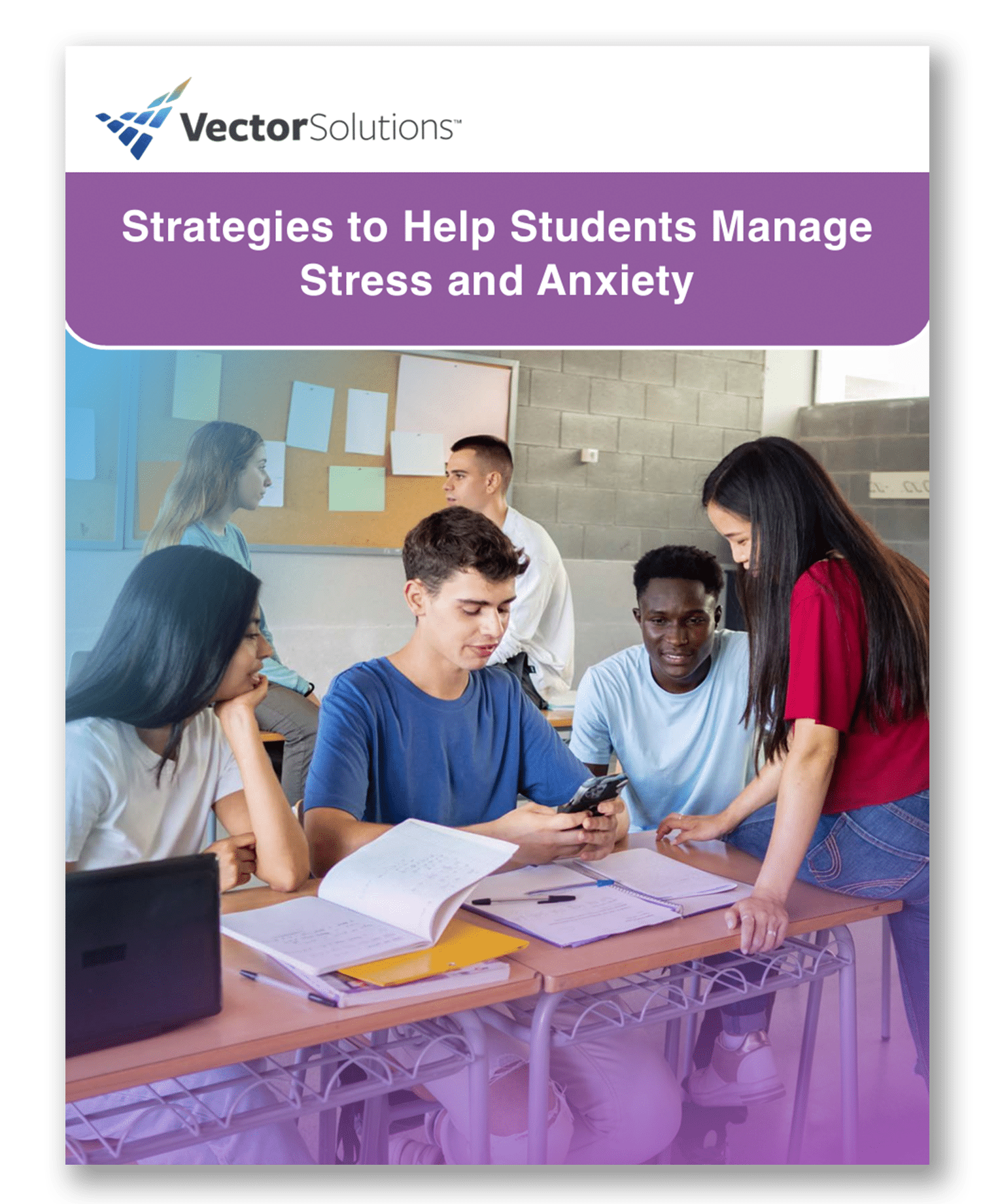October 31, 2024 4 min read

Strategies to Help Students Manage Stress and Anxiety
Industry:
Solution:

As the landscape of education continues to evolve, one alarming trend has emerged: the rise in anxiety and stress among students. According to recent data presented by licensed clinical social worker Natalie Asayag in a webinar for Vector Solutions, nearly one-third of middle and high school students in the U.S. are affected by anxiety—a figure that has only worsened since the pandemic. Understanding how to address this growing issue is essential for educators, parents, and the community.
The Growing Concern
According to the Anxiety & Depression Association of America, anxiety is now the most common mental health disorder in the U.S., impacting 40 million adults each year. For young people aged 13 to 18, this statistic is even more striking, with 31.9% of adolescents experiencing anxiety disorders. Reports show a staggering 27% increase in anxiety among children and adolescents from 2016 to 2019, further exacerbated by the challenges of the COVID-19 pandemic.
When students face overwhelming stress, it can hinder their academic performance and daily functioning. Educators must recognize the signs and provide practical strategies to help students manage their mental health.
Understanding Anxiety and Stress
It’s important to differentiate between stress and anxiety. Stress typically arises from external triggers and is often short-term, while anxiety is characterized by persistent, excessive worry that can become debilitating. Various factors can contribute to student anxiety, including:
- Biological Causes: Genetic predisposition can make some students more prone to anxiety.
- Environmental Influences: A home environment with unmanaged anxiety can be detrimental.
- Trauma: Experiences such as losing a loved one or exposure to violence can trigger anxiety.
- Medical Issues: Chronic health conditions can lead to heightened anxiety.
- Performance Pressure: Concerns about academic and extracurricular performance can overwhelm students.
- Social Factors: Peer pressure, bullying, and social media challenges add to student stress.
Recognizing both physical and emotional signs of anxiety—like lapses in focus, perfectionism, or even physical symptoms such as headaches—is crucial for teachers to provide timely support.
Strategies for Managing Stress and Anxiety
Bottom-Up Approaches
These strategies focus on utilizing physical and sensory experiences to help calm students:
- Breathing Exercises: Starting the day with guided breathing can set a calming tone.
- Calming Music: Background music can enhance focus and reduce stress.
- Movement Activities: Incorporating physical activity helps release pent-up anxiety.
- Mindfulness Breaks: Discussing feelings and practicing mindfulness together normalizes anxiety and provides coping strategies.
- Pleasant Scents: Engaging the sense of smell can be soothing; encouraging students to bring comforting scents may help.
- Imagining a Safe Space: Guiding students through visualizing a peaceful place can provide mental relief.
- Physical Cooling Techniques: Simple methods, like splashing cold water on their faces, can help ground students when they feel overwhelmed.
Top-Down Approaches
These activities encourage students to process their feelings when they’re in a calmer state:
- Circle of Control: Students identify what they can and cannot control, helping them focus on manageable aspects of their lives.
- Parking Lot Activity: Writing down worries to address later can clear the mental space for learning.
- Labeling Anxiety: Encouraging students to externalize anxious thoughts can help them reframe and manage their feelings effectively.
Creating a Supportive School Environment
A positive classroom atmosphere is vital for reducing anxiety. Strategies include:
- Establishing trust and open communication with students.
- Normalizing discussions around stress and mental health.
- Involving parents in conversations about student well-being.
- Maintaining structured routines to create a sense of security.
Supporting Teacher Well-Being
Educators also need support in managing their stress. Some effective strategies include:
- Setting boundaries to avoid absorbing students’ anxiety.
- Engaging in self-care practices.
- Creating moments for reflection after stressful days to process experiences.
As anxiety among students continues to rise, educators must equip themselves with the tools and strategies to support their students’ mental health. By fostering a safe and understanding environment, we can empower students to manage their stress and academically and personally thrive.
Free Downloadable Guide
For additional insights and strategies, explore Vector Solutions’ guide: 10 Strategies to Help Students Manage Stress and Anxiety.
Download Guide







